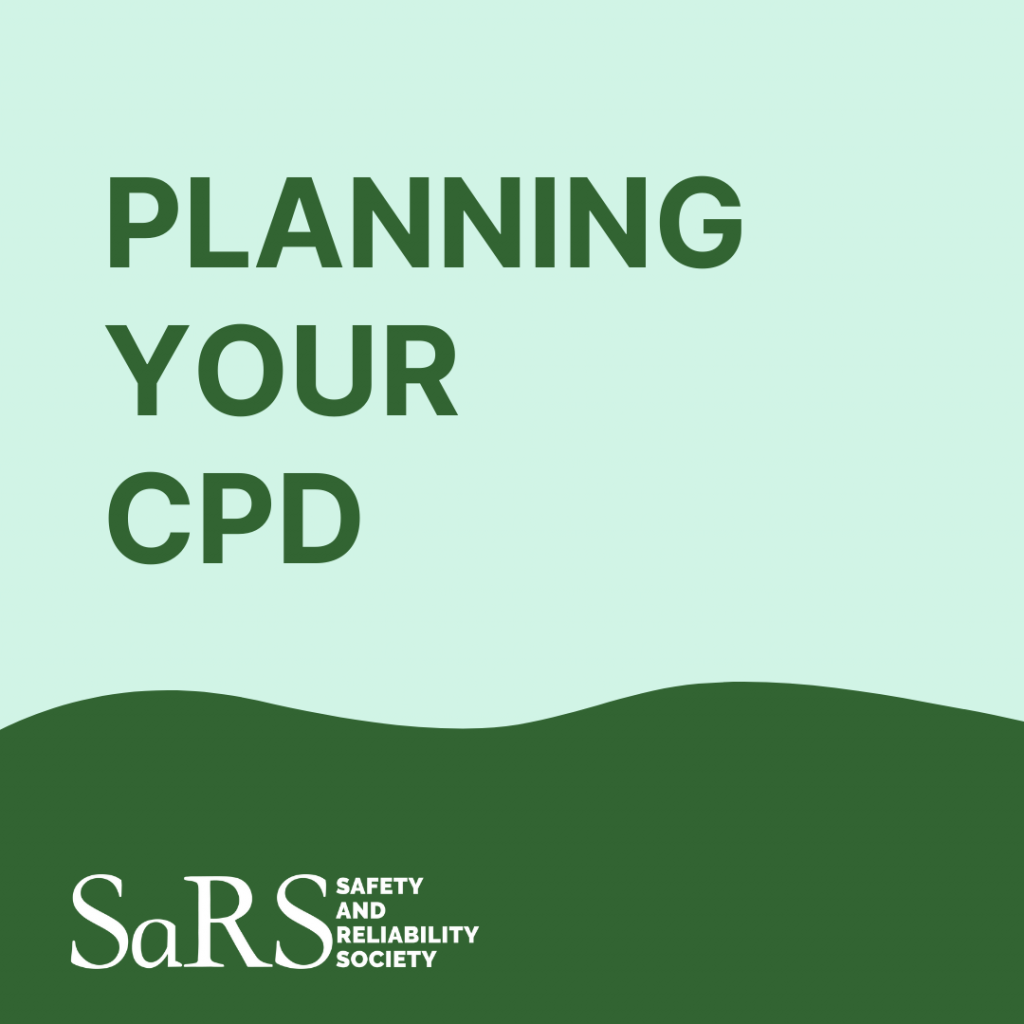Planning your CPD
Introduction

SaRS believes that all Safety and Reliability professionals should undertake Continuous Professional Development[i]. For those members who are registered with a “regulator” such as the Engineering Council CPD is mandated. But CPD can mean different things for different people depending on the stage of their career and their future aspirations. This note expands on the generic SaRS guidance[ii] by describing approaches to CPD for these different cases. These cases are written in a binary way and many people will be a combination of these cases.
In the following examples the “Plan” is a document that looks ahead up to 10 years with decreasing detail, but should broadly identify the activities to be undertaken in 1-2 years, 3-5 years and 5-10 years to achieve the desired professional goal and the knowledge required to achieve it (whether this “knowledge” is through academic study, seminars/webinars, training (in-house/external) or just “on the job”.)
Scenario 1: Mid-Career professional who is planning to continue in the same role for the immediate future.
The focus of the plan will be on:
- Maintaining currency
- Looking to learn from experience of others.
- Monitoring changes/developments
Scenario 2: Newly qualified person who is in the early stages of their Safety/Reliability Career
The focus of the plan will be on:
- Growing technical knowledge and experience
- Taking responsibility for more complex and challenging activity
- Growing broader skills, such as management, commercial, project management
Scenario 3: Established professional who is looking to move into management roles. The focus of the plan will be on:
- Maintaining currency
- Developing/demonstrating people management skills
- Developing/demonstrating management skills such as programme management and commercial skills
Scenario 4: Established professional who is looking to move into another industrial sector. The focus of the plan will be on:
- Maintaining currency
- Understanding the different technologies
- Understanding different:
- uses of the standard tools and techniques.
- approaches to Safety/Reliability problems/activity.
Scenario 5: Established professional who is looking to move into an associated technical area.
The focus of the plan will be on:
- Maintaining currency
- Identifying the differences in applying common techniques
- Developing knowledge of new techniques
Scenario 6: A professional returning to work after a career break
The focus of the plan will be on:
- Refreshing existing knowledge
- Understanding any changes which have occurred whilst on a career break.
- Developing knowledge to fill any gaps caused by these changes.
Common to all
In all of these scenarios, a plan may also include elements of:
- Contributing to the profession
- Developing people who are junior.
- Encouraging STEM in schools
[i] SaRS Code of conduct for members – “Maintain and enhance their competence” Bylaws, Code of Conduct and Disciplinary Procedure – The Safety and Reliability Society (sars.org.uk),
[ii] Continuing Professional Development (CPD) – The Safety and Reliability Society (sars.org.uk)
